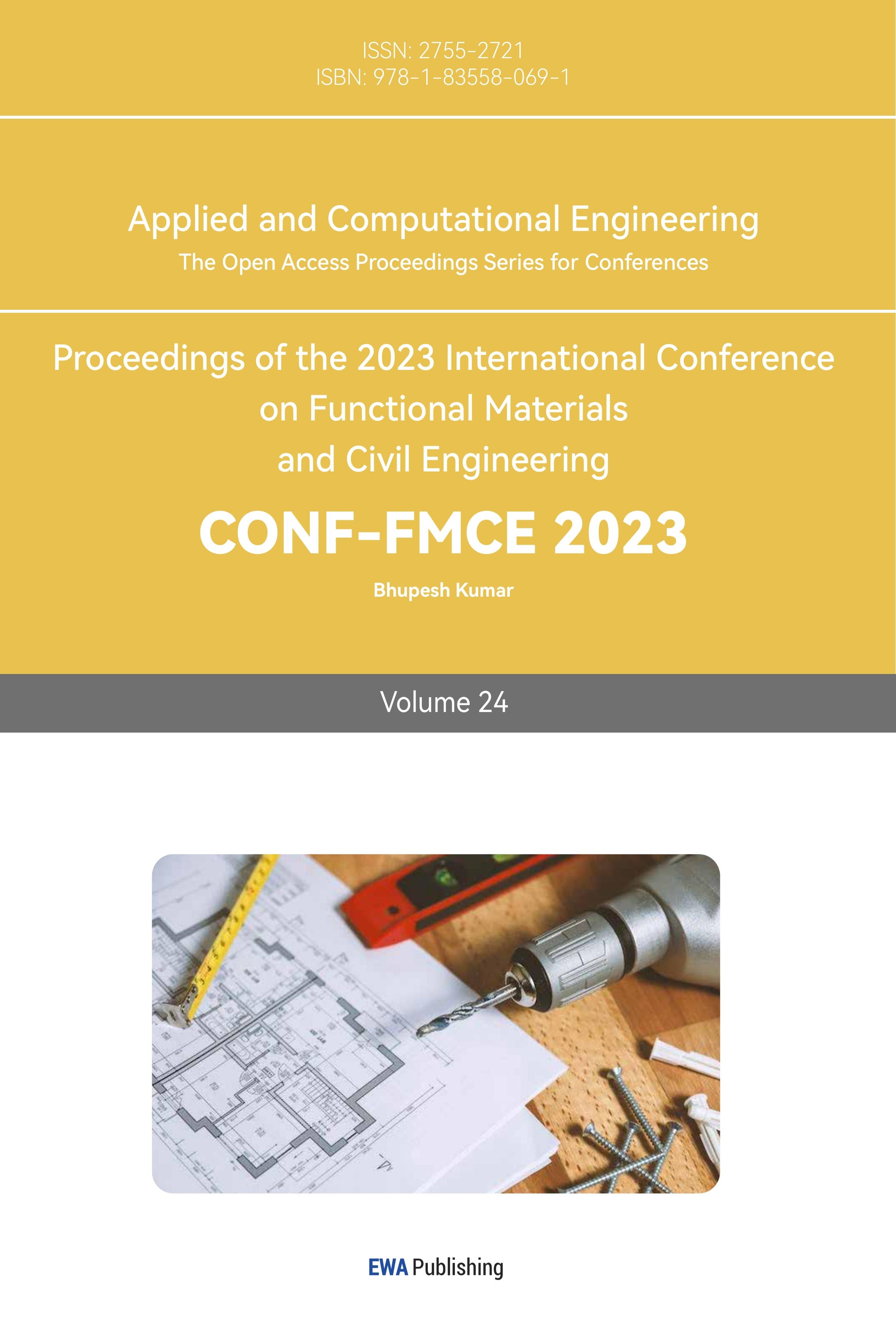References
[1]. Üner M, Yener G, 2007 Int. J. Nanomed. 2 289.
[2]. Puri A, Loomis K, Smith B, et al. 2009 Crit. Rev. Ther. Drug Carrier Syst. 26 523.
[3]. Crosera M, Bovenzi M, Maina G, et al. 2009 Int. Arch.Occup. Environ. Health 82 1043–1055.
[4]. Cevc G, Vierl U, 2021 J. Controlled Release 141 277–299.
[5]. Kakadia P G, Conway B R, 2015 Am. J. Pharmacol. Sci. 2 1–7.
[6]. Purohit D K, 2016 Asian J.Pharm. (AJP) 10 1.
[7]. Madani S Y, Mandel A.M. Seifalian, 2013 Nano Rev. 4 15-21.
[8]. Castro G A, Orefice R L, Vilela J M, Andrade M S and Ferreira L A,2007 acne. J. Microencapsul. 24 395–407.
[9]. Parhi R, Suresh P, 2010 J. Chem. Pharm. Res. 2 211–227.
[10]. Wissing, S. A. and Muller, R. H. 2003 International Journal of Pharmaceutics 254 65– 68.
[11]. Sivaramakrishnan R, et al., 2004 J. Control. Release 97 493–502.
[12]. Liu X. 2016 Preparation and characterization of the nanostructured lipid carriers loaded UVA/UVB sunscreens, Shanghai Institute of Technology.
[13]. Ling H, Zheng C, Mao T, et al. 2018 Journal of Chemical Engineering of Chinese Universities, 32 377-385.
[14]. Hommoss A, Souto E B, and Müller R H, 2005 Annual Meeting and Exposition #M1238 6–10.
[15]. Wissing SA, Mäder K and Müller R H, 2000 In Proc. Int. Symp. Control Rel Bioact Mater 27, 311–312.
[16]. Wissing S A, and Muller R H, 2003 Eur. J. Pharm. Biopharm. 56 67–72.
[17]. Villalobos-Hernandez J R, Muller-Goymann C C, 2005 Eur. J. Pharm. Biopharm. 60 113–122.
[18]. Lambers H, Piessens S, Bloem A, Pronk H, and Finkel P, 2006 Int. J. Cosmet. Sci. 28 359–370.
[19]. Li M. 2015 Study on encapsulation and stability of nature active products. Beijing University of Chemical Technology.
[20]. Mitri K, Shegokar R, Gohla S, et al. 2011 International Journal of Pharmaceutics,414 267-275.
[21]. Fatime Pinto, Drangana P C, de Barros, et al. 2018 Industrial Crops&Products, 118 149-159.
[22]. Yoon G, Park J W, Yoon I S. 2013 J Pharm Investig. 43 353–362.
Cite this article
Yu,L. (2023). Principle and Application of Lipid Nanoparticles in Cosmetics. Applied and Computational Engineering,24,231-236.
Data availability
The datasets used and/or analyzed during the current study will be available from the authors upon reasonable request.
Disclaimer/Publisher's Note
The statements, opinions and data contained in all publications are solely those of the individual author(s) and contributor(s) and not of EWA Publishing and/or the editor(s). EWA Publishing and/or the editor(s) disclaim responsibility for any injury to people or property resulting from any ideas, methods, instructions or products referred to in the content.
About volume
Volume title: Proceedings of the 2023 International Conference on Functional Materials and Civil Engineering
© 2024 by the author(s). Licensee EWA Publishing, Oxford, UK. This article is an open access article distributed under the terms and
conditions of the Creative Commons Attribution (CC BY) license. Authors who
publish this series agree to the following terms:
1. Authors retain copyright and grant the series right of first publication with the work simultaneously licensed under a Creative Commons
Attribution License that allows others to share the work with an acknowledgment of the work's authorship and initial publication in this
series.
2. Authors are able to enter into separate, additional contractual arrangements for the non-exclusive distribution of the series's published
version of the work (e.g., post it to an institutional repository or publish it in a book), with an acknowledgment of its initial
publication in this series.
3. Authors are permitted and encouraged to post their work online (e.g., in institutional repositories or on their website) prior to and
during the submission process, as it can lead to productive exchanges, as well as earlier and greater citation of published work (See
Open access policy for details).
References
[1]. Üner M, Yener G, 2007 Int. J. Nanomed. 2 289.
[2]. Puri A, Loomis K, Smith B, et al. 2009 Crit. Rev. Ther. Drug Carrier Syst. 26 523.
[3]. Crosera M, Bovenzi M, Maina G, et al. 2009 Int. Arch.Occup. Environ. Health 82 1043–1055.
[4]. Cevc G, Vierl U, 2021 J. Controlled Release 141 277–299.
[5]. Kakadia P G, Conway B R, 2015 Am. J. Pharmacol. Sci. 2 1–7.
[6]. Purohit D K, 2016 Asian J.Pharm. (AJP) 10 1.
[7]. Madani S Y, Mandel A.M. Seifalian, 2013 Nano Rev. 4 15-21.
[8]. Castro G A, Orefice R L, Vilela J M, Andrade M S and Ferreira L A,2007 acne. J. Microencapsul. 24 395–407.
[9]. Parhi R, Suresh P, 2010 J. Chem. Pharm. Res. 2 211–227.
[10]. Wissing, S. A. and Muller, R. H. 2003 International Journal of Pharmaceutics 254 65– 68.
[11]. Sivaramakrishnan R, et al., 2004 J. Control. Release 97 493–502.
[12]. Liu X. 2016 Preparation and characterization of the nanostructured lipid carriers loaded UVA/UVB sunscreens, Shanghai Institute of Technology.
[13]. Ling H, Zheng C, Mao T, et al. 2018 Journal of Chemical Engineering of Chinese Universities, 32 377-385.
[14]. Hommoss A, Souto E B, and Müller R H, 2005 Annual Meeting and Exposition #M1238 6–10.
[15]. Wissing SA, Mäder K and Müller R H, 2000 In Proc. Int. Symp. Control Rel Bioact Mater 27, 311–312.
[16]. Wissing S A, and Muller R H, 2003 Eur. J. Pharm. Biopharm. 56 67–72.
[17]. Villalobos-Hernandez J R, Muller-Goymann C C, 2005 Eur. J. Pharm. Biopharm. 60 113–122.
[18]. Lambers H, Piessens S, Bloem A, Pronk H, and Finkel P, 2006 Int. J. Cosmet. Sci. 28 359–370.
[19]. Li M. 2015 Study on encapsulation and stability of nature active products. Beijing University of Chemical Technology.
[20]. Mitri K, Shegokar R, Gohla S, et al. 2011 International Journal of Pharmaceutics,414 267-275.
[21]. Fatime Pinto, Drangana P C, de Barros, et al. 2018 Industrial Crops&Products, 118 149-159.
[22]. Yoon G, Park J W, Yoon I S. 2013 J Pharm Investig. 43 353–362.









